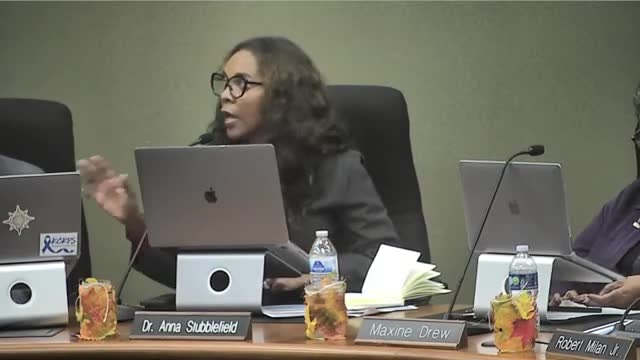Schools face crisis as chronic absenteeism rises
November 12, 2024 | Kansas City, School Boards, Kansas
This article was created by AI summarizing key points discussed. AI makes mistakes, so for full details and context, please refer to the video of the full meeting. Please report any errors so we can fix them. Report an error »

In a recent government meeting, officials addressed the pressing issue of chronic absenteeism in schools, highlighting the need for higher expectations and more effective strategies to engage students. The discussion centered around the alarming statistic that 7.9% of students were chronically absent in the first quarter of the 2024-2025 school year, a figure that participants deemed unacceptable.
One official emphasized the importance of setting ambitious goals, arguing that a target of only 2% chronic absenteeism reflects a lack of aspiration. They pointed out that chronic absenteeism includes both excused and unexcused absences, noting that even students who miss school for legitimate reasons, such as medical procedures or college tours, still contribute to the overall absenteeism rates. This nuance complicates the narrative around attendance and necessitates a more detailed analysis of the reasons behind student absences.
The conversation also touched on the long-term effects of the COVID-19 pandemic, with officials acknowledging that many students did not return to school after the disruptions caused by the pandemic. This trend has left a significant number of students unaccounted for in current enrollment figures, raising concerns about their educational engagement and future prospects.
As the meeting concluded, officials encouraged board members to submit further questions to Dr. Stubblefield and announced a brief recess before resuming discussions on policy matters. The urgency of addressing absenteeism was clear, as officials recognized the need for a collective effort to improve student attendance and engagement moving forward.
One official emphasized the importance of setting ambitious goals, arguing that a target of only 2% chronic absenteeism reflects a lack of aspiration. They pointed out that chronic absenteeism includes both excused and unexcused absences, noting that even students who miss school for legitimate reasons, such as medical procedures or college tours, still contribute to the overall absenteeism rates. This nuance complicates the narrative around attendance and necessitates a more detailed analysis of the reasons behind student absences.
The conversation also touched on the long-term effects of the COVID-19 pandemic, with officials acknowledging that many students did not return to school after the disruptions caused by the pandemic. This trend has left a significant number of students unaccounted for in current enrollment figures, raising concerns about their educational engagement and future prospects.
As the meeting concluded, officials encouraged board members to submit further questions to Dr. Stubblefield and announced a brief recess before resuming discussions on policy matters. The urgency of addressing absenteeism was clear, as officials recognized the need for a collective effort to improve student attendance and engagement moving forward.
View full meeting
This article is based on a recent meeting—watch the full video and explore the complete transcript for deeper insights into the discussion.
View full meeting
